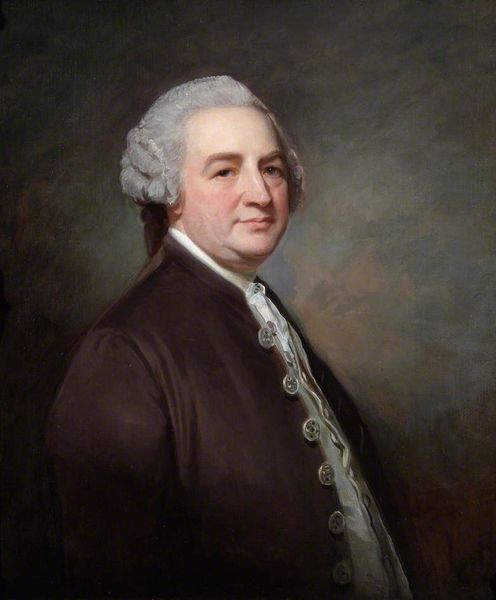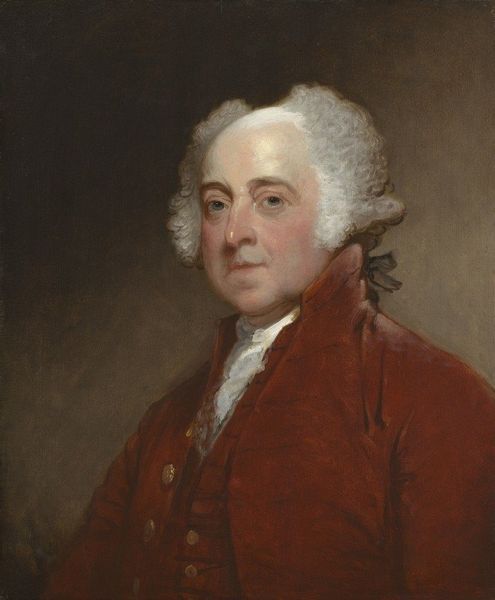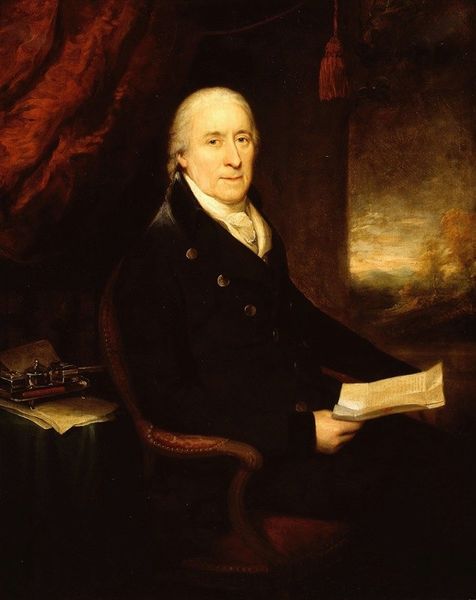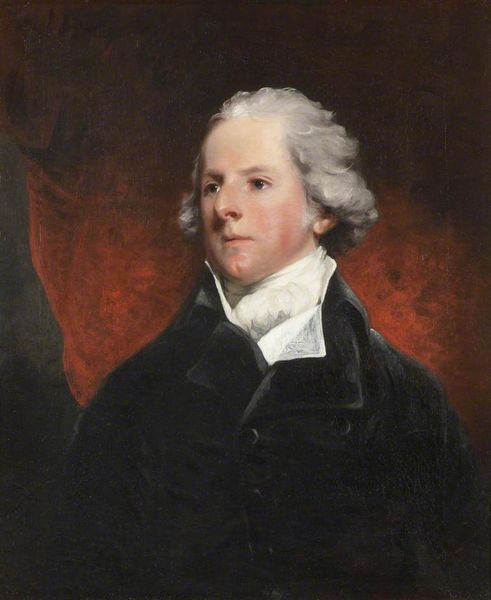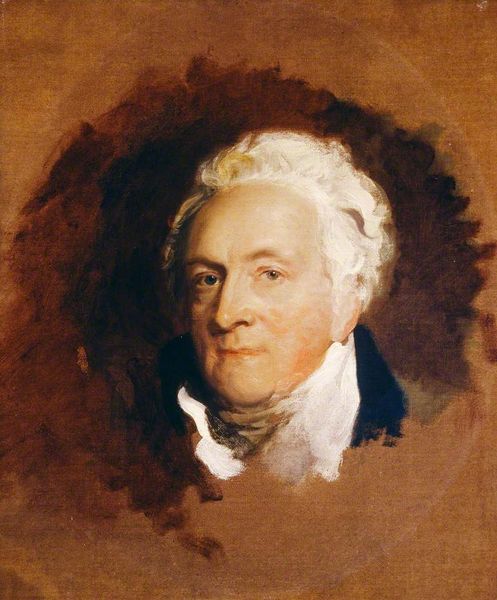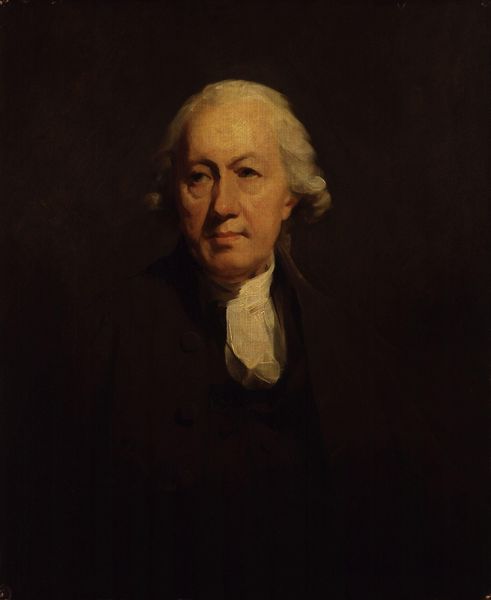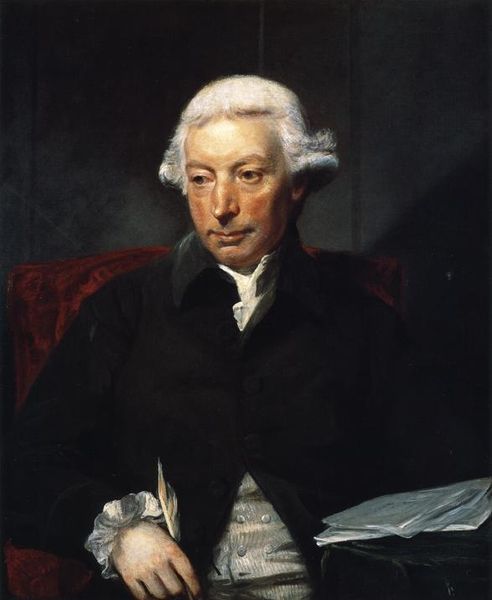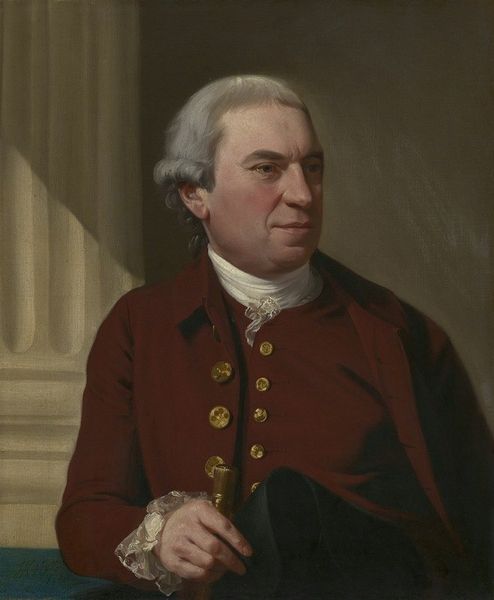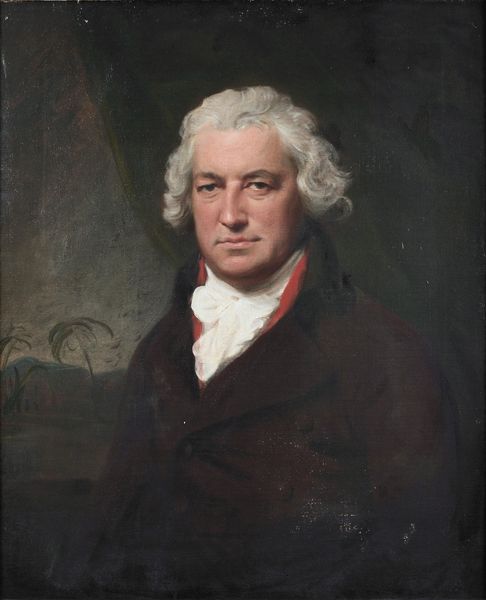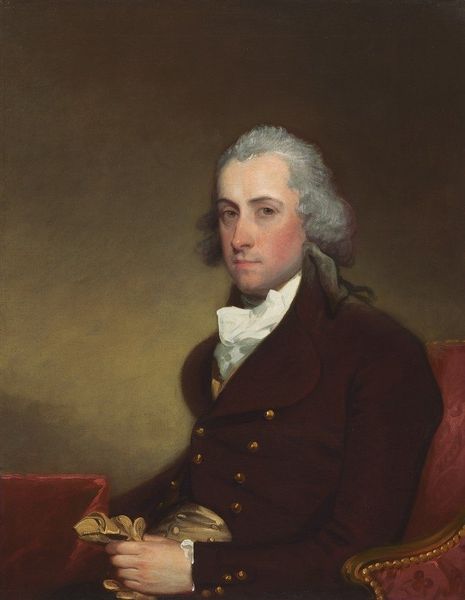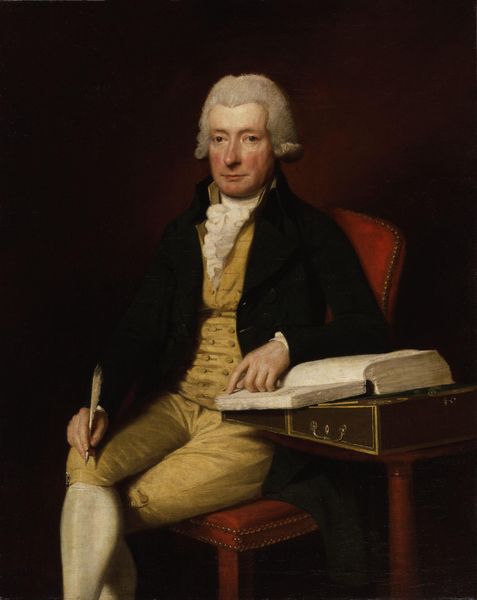
painting, oil-paint
#
portrait
#
portrait
#
painting
#
oil-paint
#
romanticism
#
history-painting
Copyright: Public domain
Curator: Up next we have "Wilhelm Cramer," a portrait painted in 1794. Editor: My first thought is 'somber authority.' Look at that light catching the folds of his coat – rich, dark oil paint beautifully worked. It conveys such weight, both visually and metaphorically. Curator: Exactly! Think about the symbolism in a piece like this: the subdued colors, the serious expression… it's all about projecting respectability and importance. The sitter's garments tell a story, each fold speaks of hours laboriously weaving that texture and rich color, likely out of reach of the common man in the 1790s. Editor: And that's exactly what makes it interesting to me. The quality of the material signals his status, this man existed because someone owned enough wealth to enable him to not work for subsistence. Curator: Absolutely. Beyond personal status, this type of image cemented one’s position in the collective memory. Portraits were how the elite wrote themselves into history. This aesthetic carried such power, influencing generations. Editor: Consider also how labor-intensive a project like this was. Mining the pigments, mixing them, stretching and prepping the canvas – and that’s before a single brushstroke! Curator: True. The entire process would take so long. When viewing images such as this now, we may feel alienated by its rigid class structure, however this type of formal portrait has contributed much to the modern notion of celebrity, which began with images such as these being produced for distribution among elites to increase the visibility of particular faces. Editor: The surface quality itself becomes a statement about wealth and the control over the physical world implied by possessing such resources. Each layer carefully applied builds this illusion of solid presence. It is amazing how one’s labor translates into solid presence today! Curator: Indeed. These portraits served as visual anchors, reinforcing the established hierarchy through readily understood symbolism. I keep wondering, how can this continue to impact the collective conscious today? Editor: Well, thinking about that relationship between the cost of making things and displaying status…that's certainly alive and well. Only now, it exists within an ever more complicated economy of mass production and planned obsolescence. This form of individual portrait does not exist in a practical sense today, other symbols have evolved that communicate the same message, it’s simply shifted contexts. Curator: What a revealing insight into both the painting's making and the symbols the artist was portraying at that time. Editor: Agreed. There’s always more than meets the eye!
Comments
No comments
Be the first to comment and join the conversation on the ultimate creative platform.
